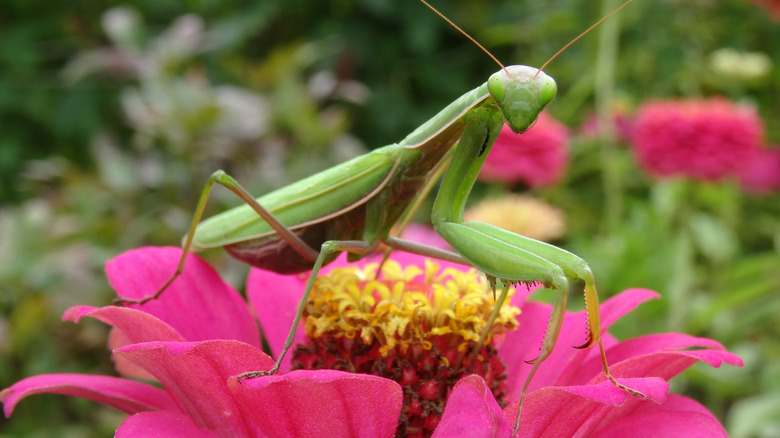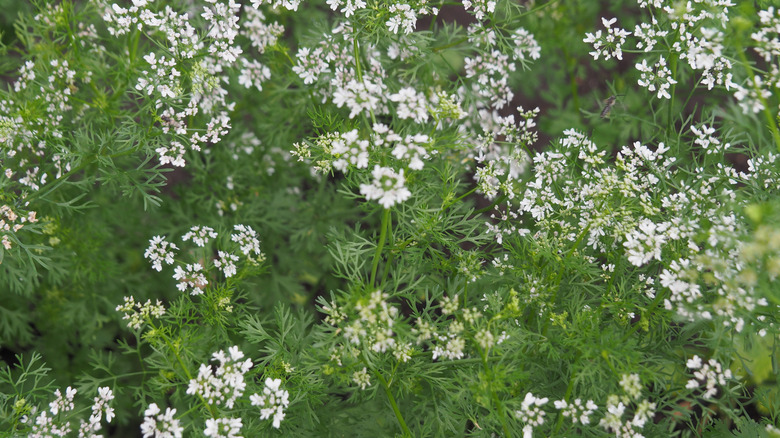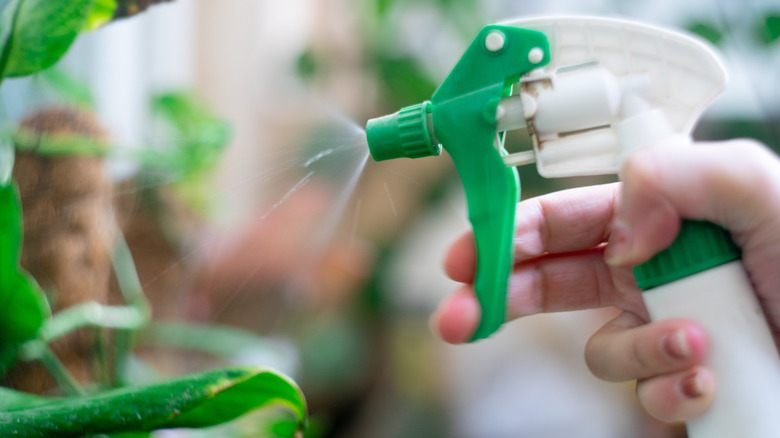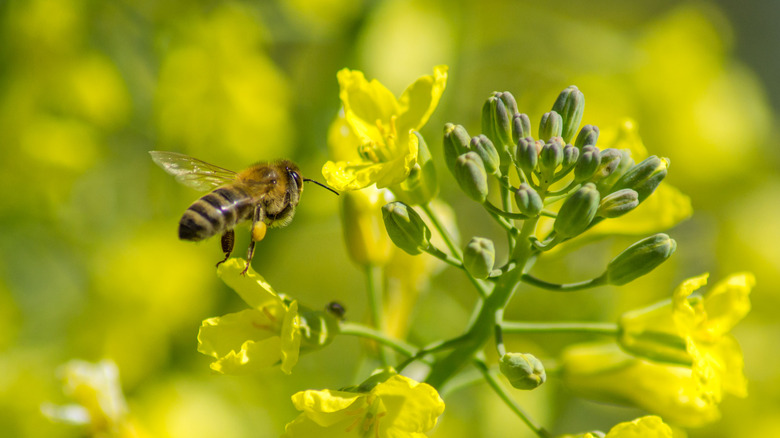3 Easy Ways To Bring Good Insects Into Your Garden
When you notice dying plants littered with small holes around your garden or bug-infested crops, your first instinct may be to spray your plants with insecticide to kill the culprits. However, we're here to tell you that better, safer options exist. Beneficial insects, including ladybugs, lacewings, hover flies, Tachinid flies, and praying mantis, each play a role in killing bad bugs. Moreover, they aren't difficult to attract, as told by Piedmont Master Gardeners.
Even though attracting more bugs to your garden may seem counterintuitive, doing so will create a more sustainable ecosystem that keeps your landscape thriving and nearly pest-free. Once you've brought in a healthy amount of beneficial insects, you may notice that your flowers are blooming more profusely, and the bad bugs are nearly gone. The best part about all of this is that one of the easiest ways to attract the right bugs is to plant more flowers. Of course, you can't go out and buy whatever you think is pretty. Instead, you'll want to look for long-blooming flowers, such as sweet alyssum, that are loved by beneficial species. Keep reading to find more easy tricks to attract good bugs into your lawn.
1. Plant flowers with diverse blooming times
Beneficial insects will visit your garden for several reasons. The most common reason, however, is to eat. Some beneficial bugs are there to feed on flowers, while others are there to feed on other bugs, as noted by the University of Wisconsin-Madison. Whether you are trying to bring good insects into your garden to protect your vegetables or to help your flowers, you will want to cater to both feeding types of beneficial bugs. The best way to do this is to plant flowers with diverse blooming times.
You will want to find your favorite flowers that bloom for a long time through the early spring and summer and more that bloom from summer to fall. When you have plenty of colorful flowers showing off their blossoms throughout the growing season, you can be sure that you are attracting all the beneficial insects you need. Some suggested plants include dill, coriander, and caraway.
2. Stop using insecticides
Pesticides, though they are great at killing the bugs that eat and destroy your plants, are also great at killing beneficial bugs too. According to Clemson Cooperative Extension, gardeners should stay away from broad-spectrum insecticides that include chemicals such as organophosphates, carbamates, pyrethroids, and neonicotinoids. Often beneficial insects such as ladybugs, praying mantids, assassin bugs, and ground beetles are even more sensitive to these chemicals than the bad bugs you are trying to kill.
When you demolish the bug population from your garden, you seriously damage the natural ecosystem that is beneficial to everything helping your plants grow. In addition to this, the bad bugs, including caterpillars, stink bugs, and aphids, are more easily able to bounce back than your beneficial insects. This means that your garden will take a big hit in production until the good bugs find their way back. If you are still keen on using insecticides, consider purchasing pest treatments that specifically target the bad insects you are trying to kill or using neem oil, which doesn't have any side effects on your plants and soil.
3. Think about beneficial insects' needs
Beneficial insects need more than flowers and other bugs to feed on. They also require water and shelter. So a great way to help your garden-friendly bug friends is to plant large shrubs and trees for the insects to overwinter successfully, as explained by PennState Extension. Even better, you can find a native shrub species that flowers during the warmer months for the bugs to feast on as well.
Piedmont Master Gardeners also suggests allowing some of your garden vegetables to flower too. Beneficial insects that eat nectar and lay their eggs on flowers appreciate the blossoms of carrots, broccoli, turnips, and kale. They also love weedy plants that we tend to kill off in our yards, such as clover, violets, and dandelions. Typically, the more natural your garden feels, with a wide range of diverse flowering plants, the more beneficial bugs you can attract.



